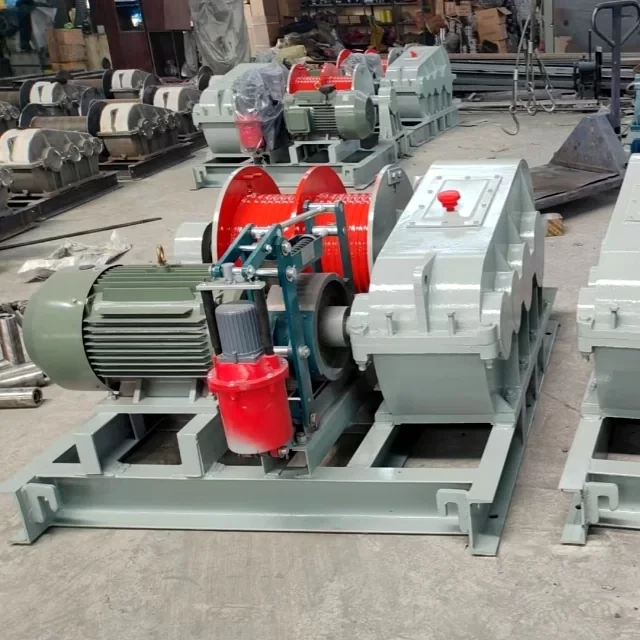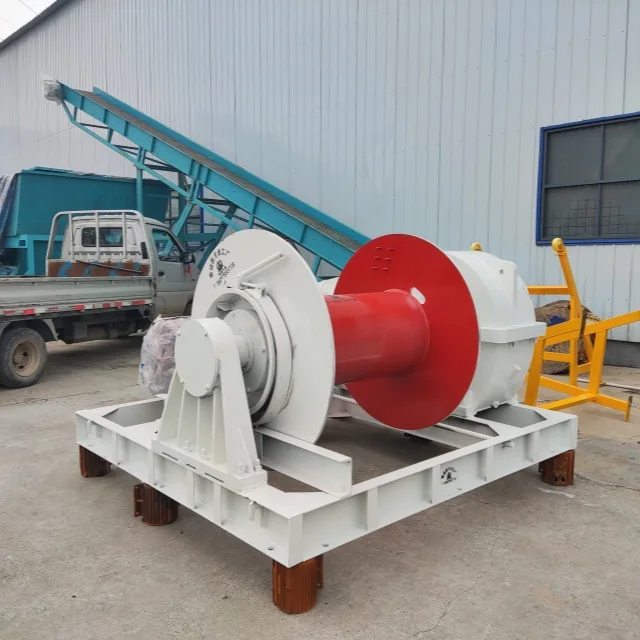Introduction
Industrial hoists are the backbone of vertical material handling in high-risk environments like blast furnaces and mining shafts. These powerful machines don’t just lift heavy loads—they ensure safety, efficiency, and compliance in industries where failure isn’t an option. This guide breaks down how modern hoist technology tackles extreme operational demands while adhering to strict safety standards.
Hoist Fundamentals for Industrial Material Handling
Vertical Transport Mechanics in Extreme Conditions
Hoists convert rotational force into vertical movement using drums, wire ropes, and precision gears. But in extreme environments, three factors dominate performance:
- Temperature resistance: Components must withstand heat up to 65°C near blast furnaces
- Load stability: Dynamic braking systems prevent sway during multi-ton lifts
- Corrosion protection: Sealed motors combat humidity in mining shafts
Ever wondered how a hoist maintains grip on slippery loads? Advanced drum designs incorporate grooved patterns and automatic tension monitoring.
Critical Industries: Blast Furnaces vs. Mining Shafts
| Environment | Key Hoist Requirements | Common Challenges |
|---|---|---|
| Blast Furnaces | Heat-resistant cables, rapid cooling systems | Thermal expansion of metal parts |
| Mining Shafts | Explosion-proof motors, dust seals | Moisture-induced corrosion |
In steel mills, hoists transport molten metal containers at 1.5m/sec, while mining operations demand slower, controlled descent speeds below 0.3m/sec for personnel safety.
Advanced Safety and Operational Features
Fail-Safe Mechanisms for Hazard Mitigation
Modern hoists integrate five-layer protection systems:
- Overload sensors (trigger alarms at 110% capacity)
- Emergency stop brakes (engage within 0.5 seconds)
- Redundant motors (backup power during failures)
- Anti-drop latches (mechanical locks for power outages)
- Real-time monitoring (vibration and temperature analytics)
A single hoist in a garlway system can process 300+ safety checks per lift cycle through integrated PLCs.
Energy Efficiency and Load Capacity Optimization
Variable frequency drives (VFDs) reduce energy consumption by 40% compared to traditional hoists. Smart load distribution:
- Parallel hoisting: Two synchronized hoists share heavy loads
- Dynamic braking: Regenerative systems recover descent energy
- AI-based scheduling: Predicts optimal lift times to minimize idle runs
Selecting the Right Hoist for Your Application
Compliance with Industry-Specific Standards
| Standard | Coverage | Verification Method |
|---|---|---|
| OSHA 1926.552 | Load testing procedures | Annual certified inspections |
| ISO 4309 | Wire rope discard criteria | Ultrasonic thickness testing |
| EN 13157 | Manual control requirements | Emergency stop response trials |
Pro Tip: Look for hoists with dual certification marks—this indicates testing under both regional and international protocols.
Case Study: Reducing Downtime in Steel Production
A Korean steel mill achieved 92% operational uptime after implementing hoists with:
- Modular components (4-hour replacement vs. 3-day repairs)
- Predictive maintenance alerts (bearing replacements scheduled during planned stops)
- Remote diagnostics (troubleshooting via tablet before technicians arrive)
Conclusion: Elevating Safety and Productivity
Industrial hoists transform high-risk vertical handling into controlled, efficient processes. When selecting equipment:
- Prioritize environment-specific durability (heat/corrosion resistance)
- Demand multi-layered safety systems with real-time monitoring
- Verify compliance with both local and global standards
For operations requiring reliable vertical transport solutions, garlway’s engineered hoisting systems deliver the precision and robustness extreme industries demand—without compromising safety or efficiency.
Final Thought: In material handling, the true measure of a hoist isn’t just what it can lift, but how consistently it performs when conditions are at their worst.
Related Products
- Shaft Mixer Machine for Cement and Regular Concrete Mixing
- Electric Hoist Winch Boat Anchor Windlass for Marine Applications
- Commercial Construction Mixer Machine for Soil Cement Mixing Concrete
- Ready Mixer Machine for Construction Ready Mix Machinery
- HZS35 Small Cement Concrete Mixing Batch Plant
Related Articles
- How to Prevent Material Flow Disruptions in Concrete Batching Hoppers
- How Concrete Mixers Cut Costs and Boost Efficiency in Construction Projects
- How to Diagnose and Prevent Sensor Resistance Failures in Concrete Mixing Equipment
- How to Prevent Structural Failures and Explosions in Concrete Plants: A Safety-First Guide
- How Flat-Mouth Concrete Mixers Solve Stability Challenges in Harsh Construction Environments

















